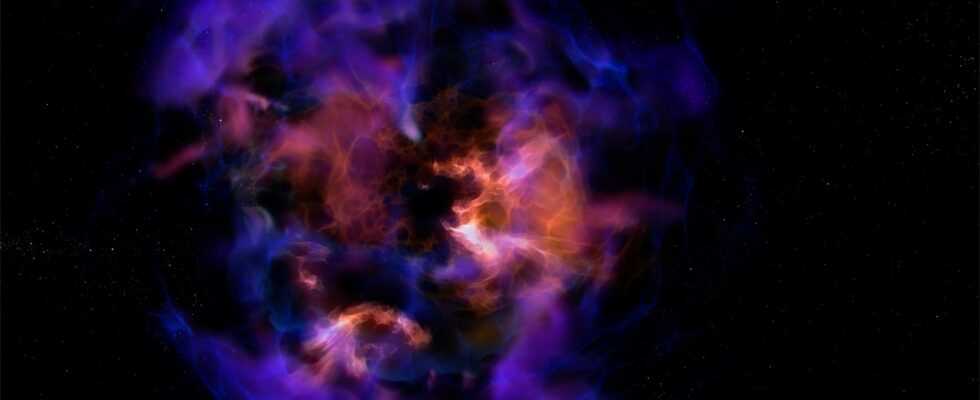Some stars end their life in a spectacular explosion: the supernova. But what is it exactly?
The stars are not eternal, including the Sun. The evolution that awaits them, once they have reached the end of their life, depends on their starting mass. The most massive become black holes or neutron stars; the less massive end in a white dwarf. Our Sun falls into the second category. Nor is it massive enough to become a supernova.
A supernova? It is simply the explosion of a star. It’s even ” the biggest explosion that occurs in space “, according to NASA. The event is spectacular, but very rare.
Those that astronomers discover are generally located in other galaxies. It is more complex to observe supernovae inside the Milky Way, because the dust interferes with their observation. The last supernova to be observed live in our galaxy is SN 1604: it was studied in detail by Kepler in 1604.
How do we go from a star to a supernova?
How does a supernova occur? The phenomenon involves a change in the core, or center, of a star “says NASA. This can happen in two different ways:
- When a single, massive star reaches the end of its life. Gradually, the star runs out of fuel, part of its mass lodges in its core. But this core becomes so heavy that it ends up collapsing: this is the explosion. For stars that have a mass about 10 times that of our Sun, the supernova can give rise to a black hole.
- In binary systems, composed of two stars. One of the stars and a white dwarf, which absorbs matter from its companion. The white dwarf ends up accumulating too much matter: it is the explosion.
Observing a supernova is certainly memorable. ” These spectacular events can be so bright that they eclipse all of their galaxies for days or even months. They can be seen across the Universe “, according to NASA.
Even though supernovae are very brief events, they are of interest to scientists. They can for example help to show that the Universe is expanding. They also seem to play an important role in the way the chemical elements are distributed in the Universe: the projection of the debris in space makes the elements travel, which will form new stars or planets.
Supernovae are rare: astronomers estimate that two to three supernovae occur each century in galaxies similar to ours. This is why it is sometimes tempting to get excited as soon as a star changes its behavior (and it is difficult to explain why): a recent drop in brightness of Betelgeuse could have given rise to talk of a supernova, but for the moment the big star still hasn’t exploded.
